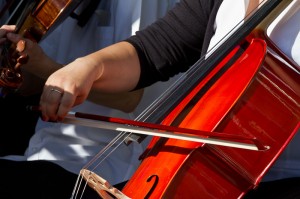 Concepts are fundamentals, rather like key ingredients that music possesses. It is the effectiveness of how they have been manipulated that results in how effective the piece is. Each concept is of vital importance to Music students. Additional outcomes are unity, balance, variety and contrast.
Concepts are fundamentals, rather like key ingredients that music possesses. It is the effectiveness of how they have been manipulated that results in how effective the piece is. Each concept is of vital importance to Music students. Additional outcomes are unity, balance, variety and contrast.
Here is an overview of the concepts of Music.
Pitch – this has to do with melody as well as harmony. There are many points relating to pitch concerning range, key, register, improvisation, development, motifs and counter-melody. Pitch is generally the sung part or it may be instrumental, and can be the main tune, or ideas that are melodic that occur “underneath”, within the various layers.
Texture – this has to do with layering within a piece. Also think of vertical being a point in the piece and the “stack” of sound being heard and horizontal – the overall flow of the piece and parts coming in and going. Basic descriptions range from foreground and background and key terms include monophonic, homophonic and polyphonic.
Duration – is any aspect of timing that applies to the piece. Things like repeated patterns, speed, metre and changes of both. Look at types of note groupings within a part and think again of development vs repetition and how variation and contrast occurs. Also think rhythmic FEEL – straight/ swung/ shuffle/ bossa nova/ rubato.
Tone Colour – this is a really important concept being the one that distinguishes one sound from another. In Music 2, identify the sound and always state how it is played and the effect that it has on the overall sound of a section. Range and register does affect tone colour, for example playing a piano in the very bottom register results in an eerie, dark sound.
Dynamics – are variations of loud and soft in a piece. Dynamics can be hard to capture in a recording due to sound peaking and generally in a popular song, there is an implied rise of sound in a chorus. Again think layers and variations that can be heard in the horizontal flow of music. Expressive techniques are generally stylistically specific but often relate to volume.
Structure is the overall layout of a piece and changes that occur in the various sections. Again, if you are thinking horizontally, you will hear different ideas that come and go. Unity and balance relate to this concept and sometimes a composer may wish to revisit an idea to create unity, or to have it re-enter several times to achieve balance.
Duration (Power Point by Kate)
Musical Form (Word-by Ericsson)
Harmony (pdf – by Rachel)
Dynamics and Expressive Techniques (word doc – by Jessica)
TONE COLOUR (word doc- by Anita)
Texture (by Emily)
Musicology aural class presentation (by Lachlan and Grace)
Mozart Symphony No. 40 in G Minor (by Angel and Farrah)
Marriage of Figaro (by Bronte and Brigid)
